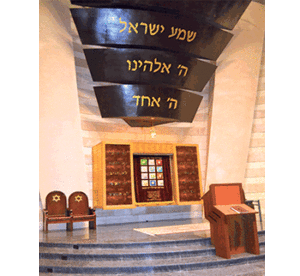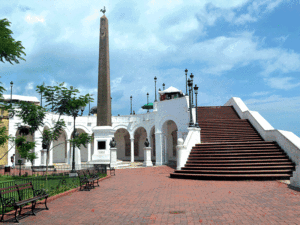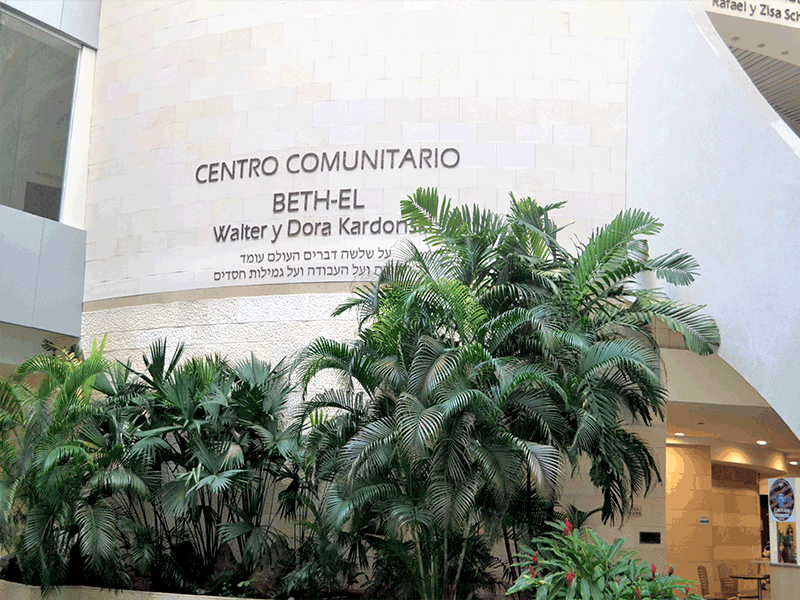Imagine being a rabbi at the helm of a community where Judaism is actively embraced; a city where Jews enthusiastically attend synagogue, keep Shabbat, send their kids to Jewish day school and honour the laws of kashrut. If this is a rabbi’s dream, then Panama City is that dream come true.
New York Rabbi Aaron Laine first arrived at Beth El, an Ashkenazi congregation in the Panama subdivision of Paitilla, 23 years ago. Back then, only one person kept the Sabbath.
Today, there are 60. “Ninety-five per cent of the community keeps kosher,” he said with pride. “On Sukkot, there used to be 10 sukkot built in the whole city. But today, everyone has a sukkah. And where we once brought just 185 sets of lulav and etrog, we now bring in 1,700!”

Panama City’s 15,000 Jews can choose from six synagogues, three Jewish day schools, two large kosher grocers and 25 kosher restaurants. Rabbi Laine’s congregation of 400 families boasts two sanctuaries, a massive social hall, two mikvahs, classrooms and a soccer pitch on the roof. On Shabbat in Paitilla, Jews are so conspicuous that you have to look hard to find anyone who is not Jewish.
READ: LEA ROBACK: CANADA’S ORIGINAL SOCIAL JUSTICE WARRIOR
I attended services there in July with my family, watching from the women’s section as male congregants embraced their rabbi, joining hands as they sang and danced their way around the bimah in a spontaneous, joyful celebration of Shabbat. Accustomed to a very different tradition in Vancouver, I asked Rabbi Laine how the community had become so religious.
“It’s a predominantly Sephardi community here and there’s much less assimilation than there is in North America,” he reflected. “Adults are engaged in Jewish learning and their kids are raised in a very traditional environment in Panama. Almost all go to Jewish day schools, where they get a traditional outlook on life that automatically brings less intermarriage. And the community also uses the old system of pressure to make sure kids marry Jewish.”

In a country of 4.1 million, Jews are very influential in Panama. The past 60 years has seen two Jewish presidents: Max Delvalle, who served for just under a month in 1968, and his nephew, Eric Arturo Delvalle, who was in office from 1985 to 1988. Jews also play a heavy role in tourism, retail and construction, and have financed many of the gleaming high-rise buildings and condominium towers in Paitilla.
“We feel greater in number than 15,000,” noted Allan Schachtel, whose family owned companies include a major tourism firm, the cruise ship port and the ferry boats that deliver tours of the Panama Canal. Rabbi Laine summed it up succinctly: “Take away the Jewish investment in construction in Panama and the country would still look like a shtetl.”
In some places, it does. There’s a stark transition between the new, well-heeled Panama, with its tall, contemporary hotels, casinos and expansive malls, and the old Panama. In Casco Viejo, the old city, we peeked inside Iglesia de San Jose to marvel at a massive altar flaked with gold that stretches over seven metres high. It’s the only thing that was saved in 1671, when the English pirate Henry Morgan ransacked and destroyed the city, burning it to the ground and making off with the loot. Local legend has it that a Jesuit priest painted the altar black to disguise it and then told Morgan that the original altar had been stolen by a different pirate. Today, supplicants still pray at the altar, four centuries after it was built.
“Take away the Jewish investment…and the country would still look like a shtetl.”
Casco Viejo is full of charming passageways and ancient buildings that have only recently been gentrified. These days, they’re being transformed to house boutiques, gelato shops, galleries and restaurants, and the area buzzes with youthful energy and a vibrant night life. But there’s sadness here, too.
The Plaza de Francia pays tribute to the French role in the construction of the Panama Canal. The French were the first to try to build the 80-kilometre canal in 1881, but their efforts were confounded by engineering troubles, bad planning and mosquito-born illnesses. Malaria and yellow fever felled 22,000 before the French gave up on the job. The Panama Canal Museum tells more of this story in a beautifully restored building that was once home to the French Canal Company.
Back in Paitilla, life is good for the Jews of Panama City. Rabbi Laine has become fluent in Spanish as he’s watched the community grow – not just in observance, but also in number. It’s swelled with Jews immigrating from Venezuela, Argentina, Uruguay and Peru. At a Chabad dinner one Friday night, we met Israelis and Canadians who’ve chosen the city as their home and love its Jewish community and spiritual warmth. This is a sweet life for a rabbi, Rabbi Laine affirmed. “The Jews in Panama are good Yiddishe neshamas,” he said, “they’re warm, traditional and deeply committed to family life.”
